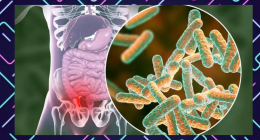Find out details on “Choosing the Optimal Fat for Ketogenic Diets: Fish Oil’s Crucial Role in Cancer Prevention”
A recent study published in Scientific Reports delved into the significant impact of various oils consumed as part of ketogenic diets (KDs) on cancer prevention, specifically focusing on murine (A/J mice) models. The study compared seven fat-enriched KDs with Western-style diets and a 15% carbohydrate diet as controls.
The results demonstrated that all KDs were more effective than Western-style and 15% carbohydrate diets in preventing nicotine-derived nitrosamine ketone (NNK)-induced lung cancer in mice. Notably, fish oils (FOs) emerged as a standout in this study due to their ability to increase plasma β-hydroxybutyrate (β-HB), lower blood glucose levels, and reduce fatty acid synthase (FAS) expression, thereby impeding lung tumor nodule formation metabolically.
Furthermore, the study addressed concerns regarding elevated plasma triglyceride (TG) and cholesterol levels induced by KDs. Researchers found that not only did standard KDs not harm the liver, but FO-enhanced KDs were even gentler on liver health and lipid profiles, underscoring their safety profile.
Ketogenic diets (KDs) are characterized by high fat content and low carbohydrates, designed to shift the body’s energy source from glucose to lipids. These diets typically provide 90% of calories from fats and only 2% from carbohydrates, promoting the utilization of ketone bodies for energy.
The study highlighted the potential of KDs in combating cancer by leveraging ketone bodies, which many cancerous tumors struggle to utilize effectively. While research on the impact of different fats in KDs on tumor cell proliferation is ongoing, it is believed that variations in fatty acid composition may influence outcomes significantly.
The study’s findings emphasized the superiority of FO-KDs in preventing NNK-induced lung cancer in mice compared to other dietary regimes. FO-KDs exhibited enhanced ketone body production, downregulated FAS expression, and reduced inflammatory cytokine levels in mouse lungs, showcasing their anti-cancer properties.
In conclusion, the study reaffirmed the safety of long-term KD consumption on liver health while highlighting the potent anti-cancer effects of FO-KDs. Fish oil stands out as a promising intervention against lung cancer, pending further validation of its cardiovascular safety for broader implementation.
What are the different types of ketogenic diets and how do they differ in terms of fat sources?
Types of Ketogenic Diets and Their Differences in Fat Sources
Ketogenic diets come in various forms, each with unique characteristics and benefits. Here are the main types of ketogenic diets and how they differ in terms of fat sources:
Standard Ketogenic Diet (SKD):
- Description: SKD is a high-fat, low-carb, moderate-protein diet that typically consists of 70-75% fat, 20% protein, and 5-10% carbs.
- Fat Sources: The majority of calories come from fats, with no specific limit on fat intake. Common fat sources include oils, butter, avocados, and nuts.
Cyclical Ketogenic Diet (CKD):
- Description: CKD involves cycling between periods of high-carb consumption and low-carb intake.
- Fat Sources: While the focus is on carb cycling, fat sources in CKD are similar to those in SKD.
Targeted Ketogenic Diet (TKD):
- Description: TKD allows for targeted carb intake around workouts to support physical performance.
- Fat Sources: Similar to SKD, fat sources play a crucial role in providing energy during low-carb periods.
Very-Low-Carb Ketogenic Diet (VLCKD):
- Description: VLCKD is essentially a standard ketogenic diet with a strong emphasis on very low carbohydrate intake.
- Fat Sources: Fat remains the primary source of calories, with an emphasis on healthy fats like coconut oil and MCT oil.
Well Formulated Ketogenic Diet (WFKD):
- Description: WFKD follows the blueprint of a standard ketogenic diet with precise macronutrient ratios.
- Fat Sources: Similar to SKD, the focus is on maintaining the right balance of fats for optimal ketosis.
MCT Ketogenic Diet:
- Description: This variation emphasizes the use of medium-chain triglycerides (MCTs) for their unique metabolic benefits.
- Fat Sources: MCT oil and emulsions are key components, providing a concentrated source of MCTs for enhanced ketone production.
These different types of ketogenic diets offer flexibility and cater to various goals and preferences while maintaining the core principles of high fat, moderate protein, and low carbohydrate intake essential for achieving ketosis and reaping the associated health benefits.
How do the different types of ketogenic diets affect the body differently?
Ketogenic diets come in various forms, each impacting the body uniquely. Here’s a breakdown of the different types of ketogenic diets and their effects on the body:
Standard Ketogenic Diet (SKD): SKD is a high-fat, low-carb, moderate-protein diet. Typically consists of 70-75% fat, 20% protein, and 5-10% carbs. Effective for weight loss, improving blood glucose control, and enhancing heart health.
Drawbacks: Initial adjustment period due to the body transitioning from glucose to ketones as its primary fuel source.
High-Protein Ketogenic Diet: A variation of SKD with higher protein intake (30-35% of calories) and lower fat content. Supports muscle growth, strength gains, and improved body composition when combined with strength training.
Cyclical Ketogenic Diet (CKD): Involves alternating between high-carb and low-carb days. Typically includes 1-2 high-carb days per week or one high-carb meal per day. Allows for increased carb consumption during specific periods, beneficial for athletes or intense training sessions.
These different types of ketogenic diets offer varying benefits and are tailored to different goals and lifestyles. While SKD is popular for weight loss and overall health improvements, CKD provides flexibility for athletes needing occasional carb intake. High-protein ketogenic diets are beneficial for muscle growth and body composition enhancement.
Each type has its unique impact on the body’s metabolism and energy utilization, making them suitable for different individuals based on their specific needs and objectives.
ALSO READ: Study suggests GLP-1 obesity drugs may change food cravings









